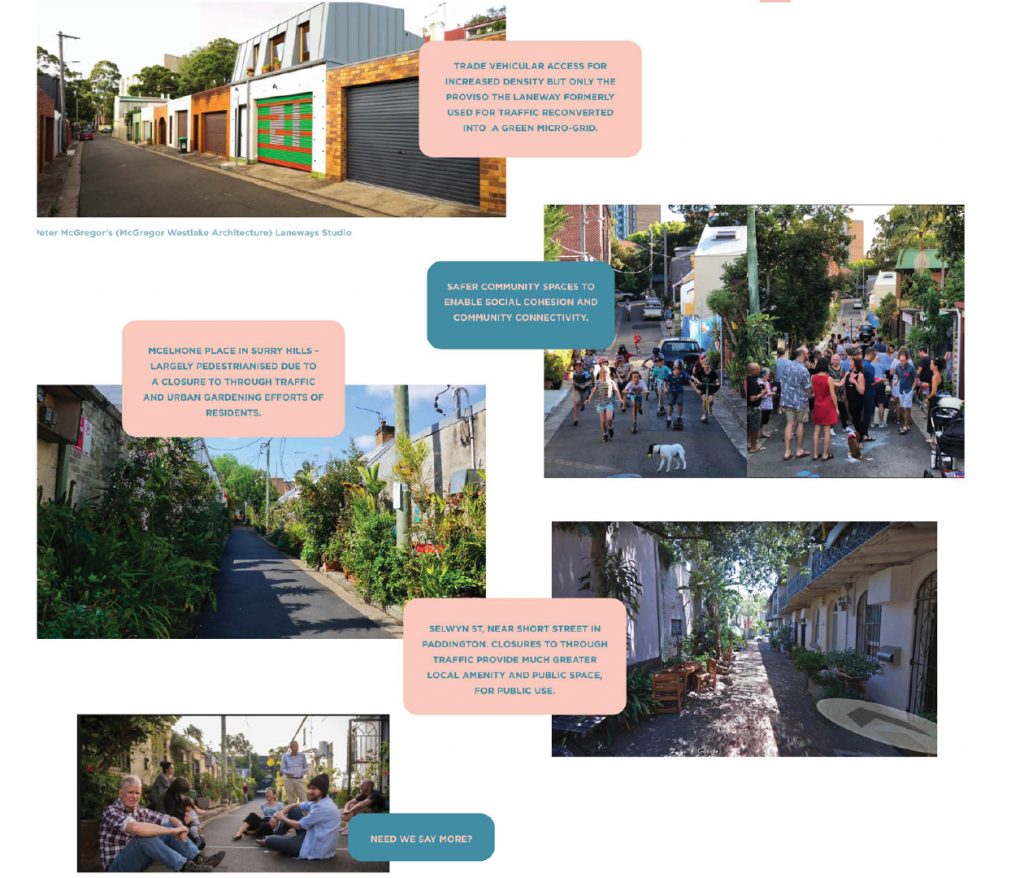Living Laneways
Jess Miller & Claire Sutton
Laneways get a bad wrap. In the olden days it was where you (literally) threw all your excrement.
Laneways get a bad wrap. In the olden days, it was where you (literally) threw all your excrement.
Nowadays, you might encounter the idle mattress, abandoned TV, and occasional car idling its way through to a rear-lane accessible carpark.
But what if inner-city laneways were Living ‘microgreen grids’?
By definition laneways are ‘away’ spaces, we turn our backs and often doorstep on them. However there is a huge opportunity to redefine laneways as public facilities, that supports living infrastructure like trees, grass, and shrubs; and social infrastructure like connection, cohesion and resilience.
Now, this is not to say it will be easy. But there’s a deal that may be struck again, through some simple planning tweaks, here’s the pitch:
You (Government) cut your losses and accept that we’re losing green space in private realm backyards so it must be compensated for in the public realm (the laneway)
You increase terrace density, but in a way that allows for ‘granny flats’ that are accessible via the laneway and condition it so that it is affordable to rent (thereby increasing property value & income) and provides greater housing diversity
You identify laneways that are ripe for a ‘tipping point’ of pedestrianisation, do the math, and work with the community to decide how they would like to collectively use what then can now consider their own new ‘backyard’
We have the ‘green grid’ idea, but truly connects the grids we need living microgrids – for urban cooling, biodiversity, nature, beauty and reconnection.
